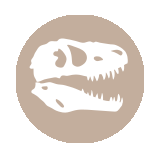Posté par Lolo
Celui-là doit être un Hadrosaure de plus de 16 mètres de long !
- Amargatitanis macni (Apesteguia)
Un Titanosaure argentin.
- Nopcsaspondylus alarconensis (Apesteguia)
Un Diplodocoïde argentin, nommé à partir d'une vertèbre perdue.
- Jiangjunosaurus junggarensis (Jia et al)
Un Stegosaure chinois.
- Zhejiangosaurus lishuiensis (Lu et al) et Zhongyuansaurus luoyangensis (Xu et al)
Ces deux là sont des Nodosauridés de Chine.
===========
Correction de la faute d'orthographe...
----------
Edité le 28/08/2007 à 16:33 par Webmaster
Posté par Fifi

Posté par Dinomaster
Posté par Fifi
 Lolo
Lolo
Posté par Gigy


Posté par Pyroraptor

Posté par Tikémi
Justement, je crois qu'ils ne vont pas chercher très loin

Posté par Fifi
Zhejiangosaurus lishiensis signifie :
Zheijang : région de Chine situé jesaisplusoù
Saurus : lézard (ou reptile)
Lishiensis : quand il il a le suffixe "ensis" siginifie que cet animal provient d'une région ou d'une ville quelquonce, ici ça devrait êtr eun truc comme "lishi".
Posté par Gigy

dis donc Tiki une vache de 16,5 m et de 9 mètres de haut (c'est tout ce que j'ai su lire de l'article en chinois


Posté par Utahraptor
Je dirais plutôt: "tiens,encore un titanosaure sud américain?"
Posté par Fifi

Posté par Utahraptor
Posté par Fifi

Posté par Fifi

Posté par Tikémi
Et où est-ce qu'on peut le trouver cet article ?

Posté par Markvantomme

Posté par Utahraptor
OK,mes excuses alors
Posté par Gigy

Posté par Carcharo
Posté par Utahraptor
Two new described diplodocids from Argentina, Amargatitanis macni and Nopcsaspondylus alarconensis
Abstract: A study of the abundant and undescribed isolated and associated bones and teeth from the La Amarga Formation (Barremian of Neuquén, Argentina ) permitted the recognition of additional clades of sauropod dinosaurs: basal titanosauriforms, both basal and derived titanosaurs, and rebbachisauroid diplodocoids, which are now added to the already known dicraeosaurids and a recently published basal diplodocoid. These forms substantially increase the knowledge on the Early Cretaceous sauropod diversity in Gondwana.
 Du nouveau
Du nouveau